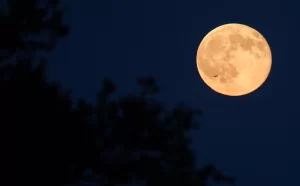bESTology 2024 – Week 2 – MOONS!
Published by Graham Gadd on
LOW G
Welcome to bESTology 2024
LOW G
During the bESTology lessons, you are going to act as a realtor and your goal is to gather enough information so you can sell property in outer space, specifically the moon.
So, as you prepare your rockets for launch and take off for your journey into outer space, we wish you the BEST of luck and may you always stay in LOW G
The ten lessons in front of you are going to prepare you for the LOW G BEST season and help your team understand the concepts needed to sell property on another planet.
You might think this is far-fetched, but it really isn’t.
So, gather your team and become the next BEST realtor.
LESSON 2 – MOONS
Welcome to lesson 2, MOONS!
In this lesson we are going to learn about the different moons in our solar system. Naturally-formed bodies that orbit planets are called moons, or planetary satellites. The best-known planetary satellite is, of course, Earth’s Moon. Since it was named before we learned about other planetary satellites, it is called simply “Moon.”
You might alos learn some Greek and Latin.
RESOURCES
LINK | URL |
| NASA | https://www.nasa.gov/ |
| BEST ROBOTICS | https://www.bestrobotics.org/site/ |
| NASA Learning Resources | https://www.nasa.gov/learning-resources/ |
| NASA – MOONS | https://science.nasa.gov/solar-system/moons/ |
RESEARCH
According to the NASA/JPL Solar System Dynamics team, the current tally of moons orbiting planets in our solar system is 293: One moon for Earth; two for Mars; 95 at Jupiter; 146 at Saturn; 28 at Uranus; 16 at Neptune; and five for dwarf planet Pluto.MOONS
In this section you are going to create a moon diagram representing important or famous moons, or just moons that you think are interesting.
You can use any format you wish to create this diagram. It could just be a spreadsheet or a graphical image. For example work in groups and use a large piece of construction paper. Draw EARTH in the center and then on the paper draw ten or moons that are in our solar system. Try get the scaling correct and list a couple of unique features about each one.a historical timeline of the term gravity, highlighting the scientists involved and the major milestones discovered. This Research and introduction will give you the stepping stones for future lessons in this bESTology series.
ACTIVITY
Look at the video above, Planets in MODERN LANGUAGE, GREEK, AND LATIN.
Make a list of all the planets in our solar system and their names in different languages.
Your BEST team is probably made up of students from different countries. Get to know your students and see if there are different languages within your team and how they say the different planets in their language.
BEST IN YOUR COMMUNITY
Look up to the sky on a nice clear night. See if you are able to identify any of the plants that are available through the naked eye.
This is challenging but can also be a lot of fun and a great skywatch party.
Let’s take a walk on the moon!

My Personal Journal